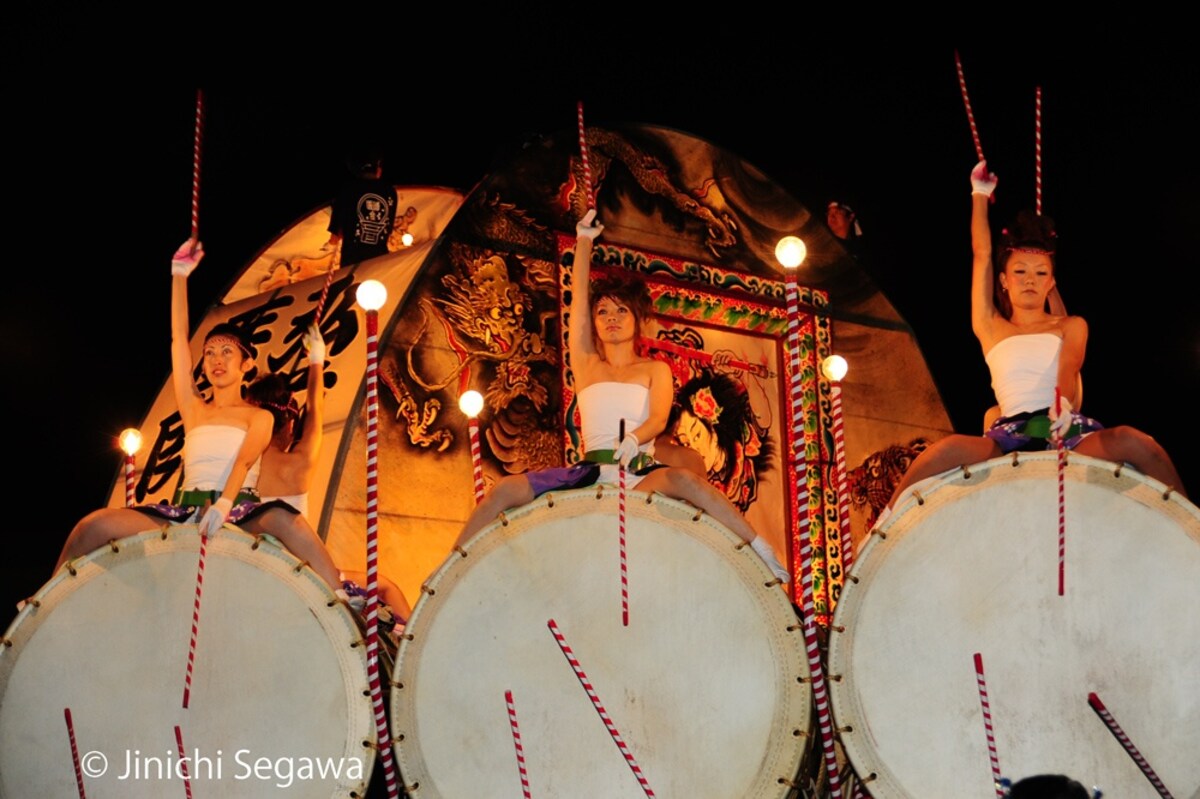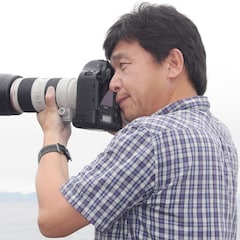Gruesome Floats from the Neputa Festival!
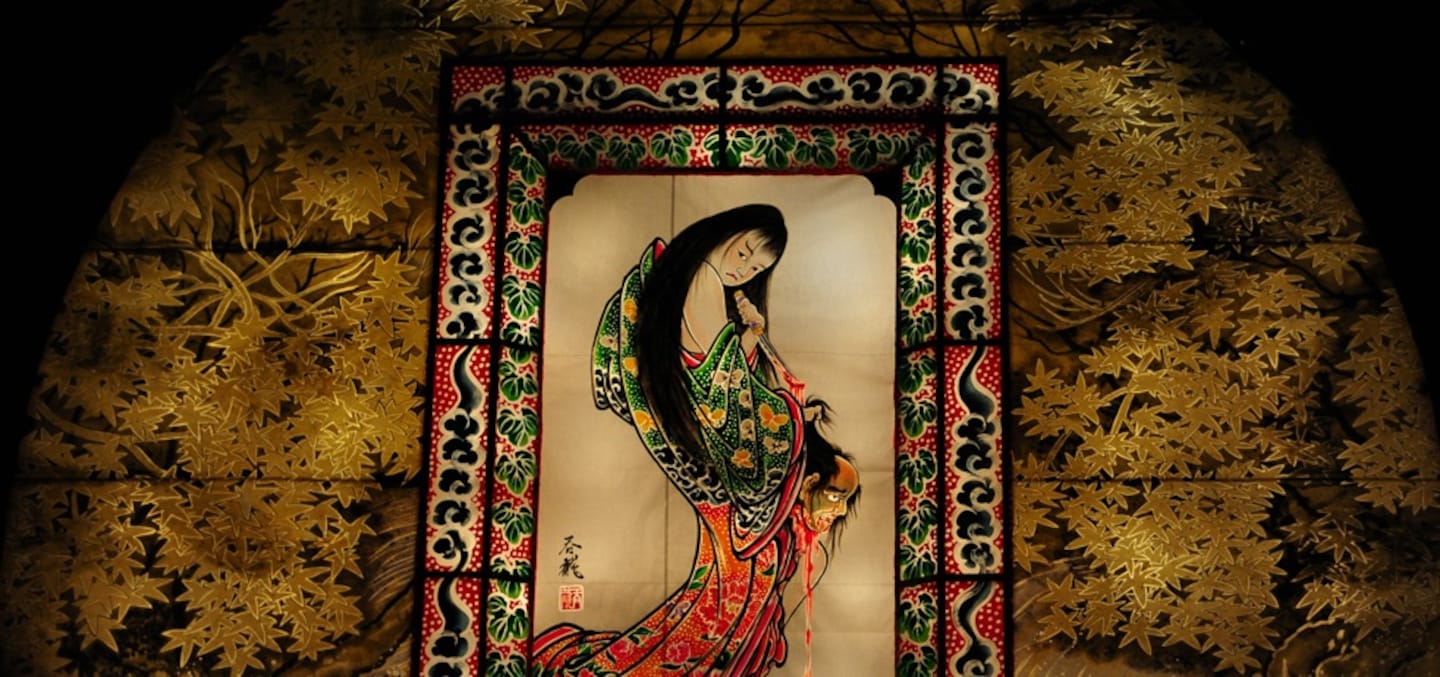
The Neputa Festival is the festival of Hirosasaki, a city located in the western half of Aomori Prefecture. Written records of the festival date back to 1722, with Images of historical warlords, called busha-e, illuminated atop large wooden floats that volunteers pull around town.
By Jinichi Segawa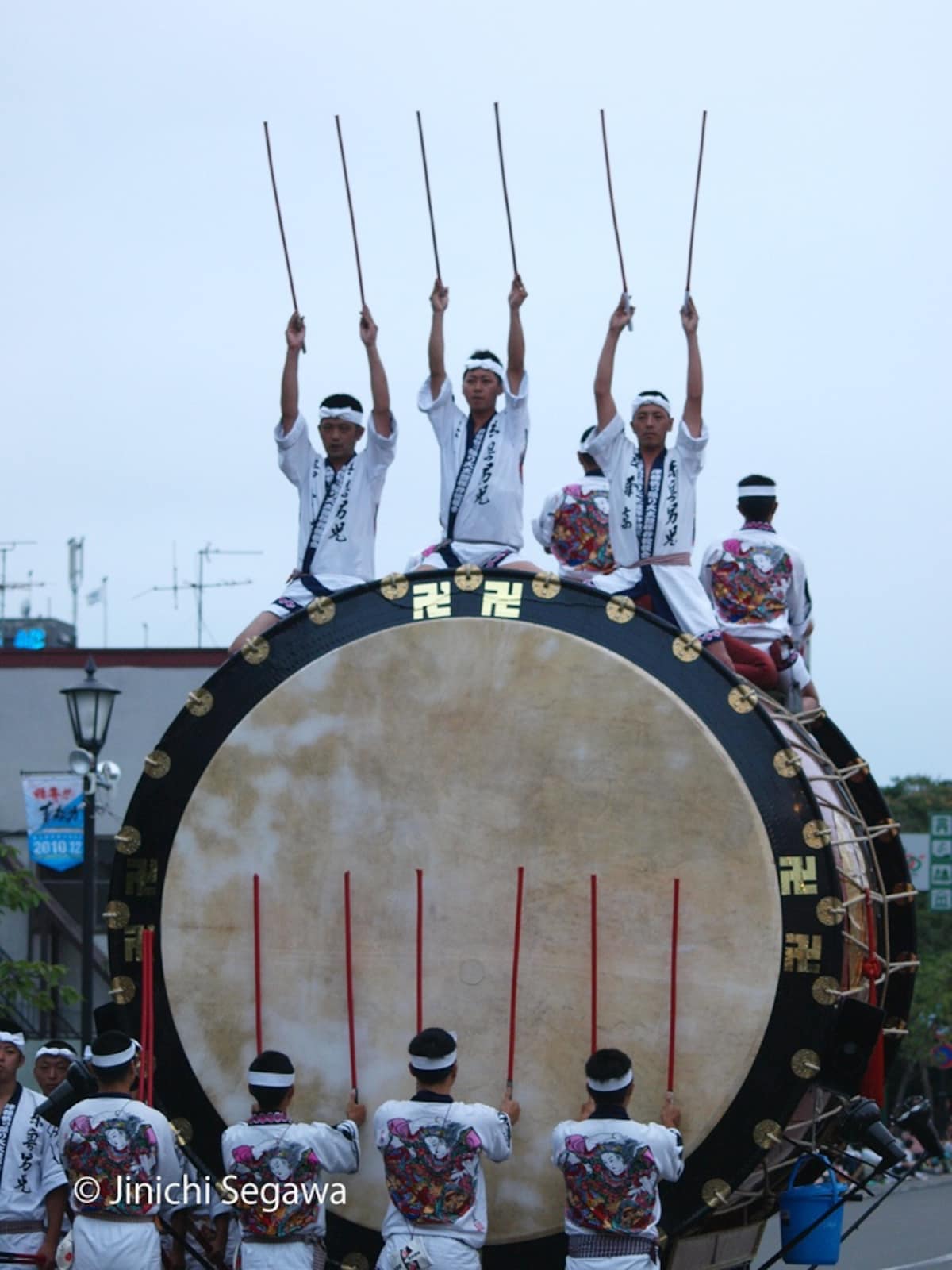
The parade is led by a gigantic taiko drum that measures 3.3 meters (10.8 ft) in diameter, called the Tsugaru Joppari Odaiko. Joppari is a term in the local Tsugaru dialect that means, "the stubbornness of people from Tsugaru."
During the first week of August every year, roughly 1.6 million people flock to the Neputa Festival, which is considered one of the Four Great Festivals of Hirosaki—and also seen as an extension of the Aomori Nebuta Festival, one of the Three Great Summer Fesivals of Tohoku.
The 'Mirror' Image Means Grim Things to Come!
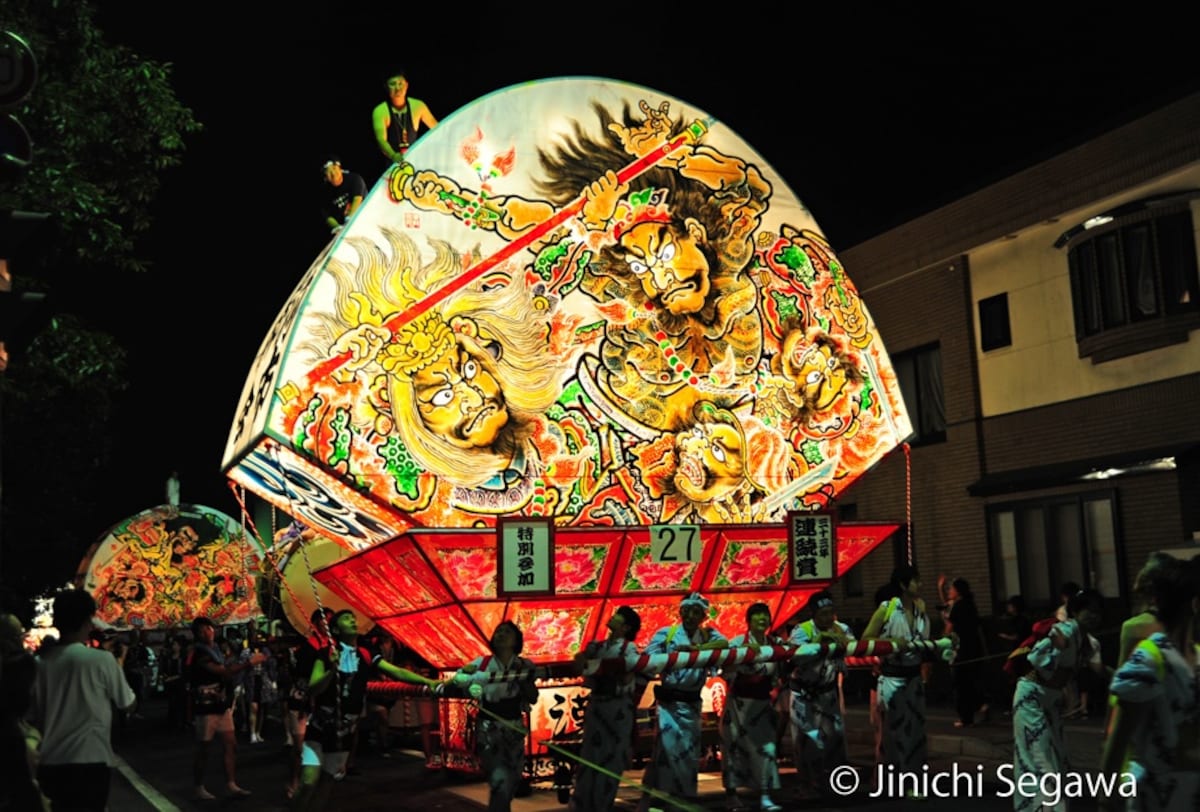
The large, fan-shaped floats of Hirosaki's Neputa Festival are called ogi-neputa, where ogi (扇) is the old Japanese term for a folding fan. The front image on the float is known as the kagami-e, or "mirror" image, while the reverse is the miokuri-e, or "farewell" image.
The kagami-e features martial scenes such as famous Japanese battles, historical figures from the Chinese Records of The Three Kingdoms, and characters from the classical Chinese novel Water Margin (known in Japan as Suikoden), which describes the adventures of 108 outlaws. By contrast, the miokuri-e on the back is typically reserved for classical images of beautiful women.
However, the closer you look at these images, the more you realize that many of them are strikingly gruesome!
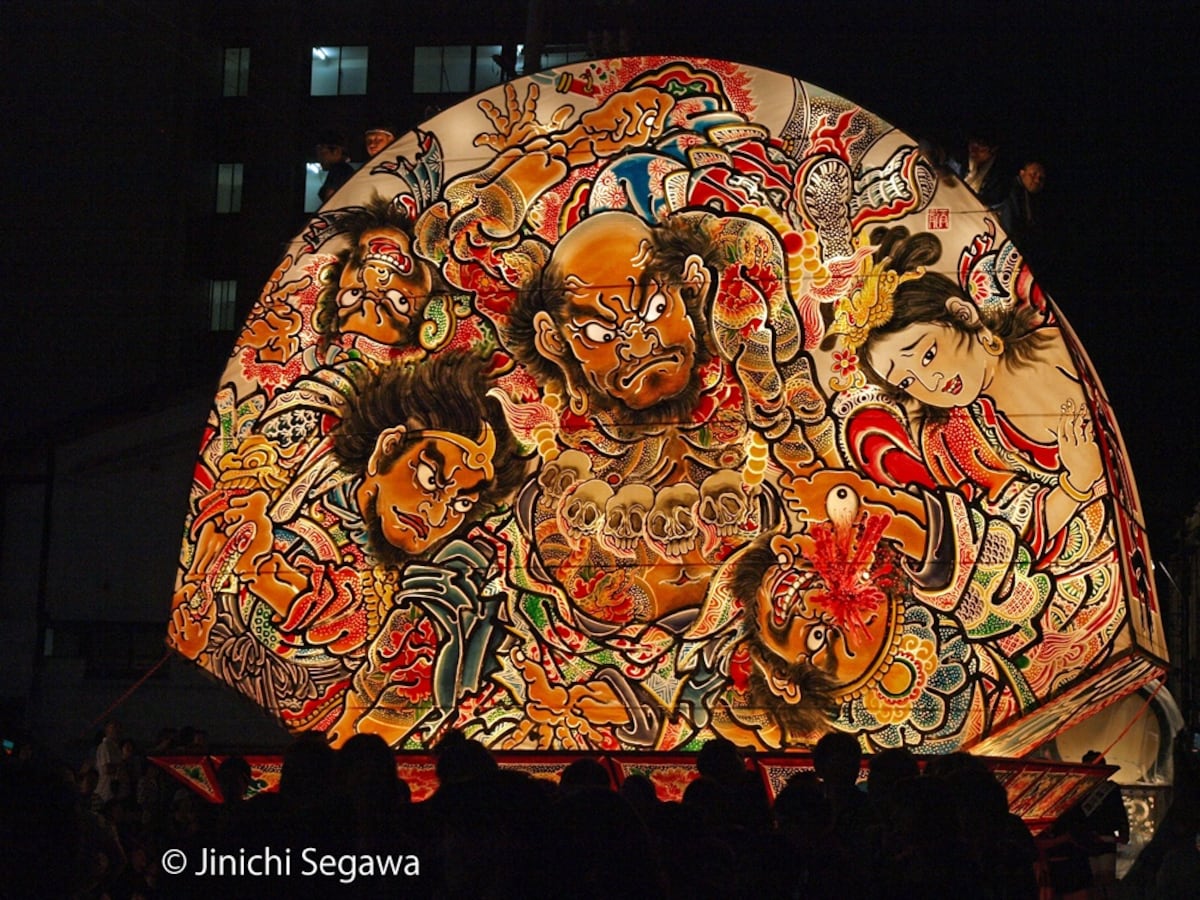
If you look closely at the front of this float, you'll notice that one of the enemy warriors has his eyeball shooting right out of its socket! You'll have to keep an eye peeled to notice some of these gory details, but others pop right out at you.
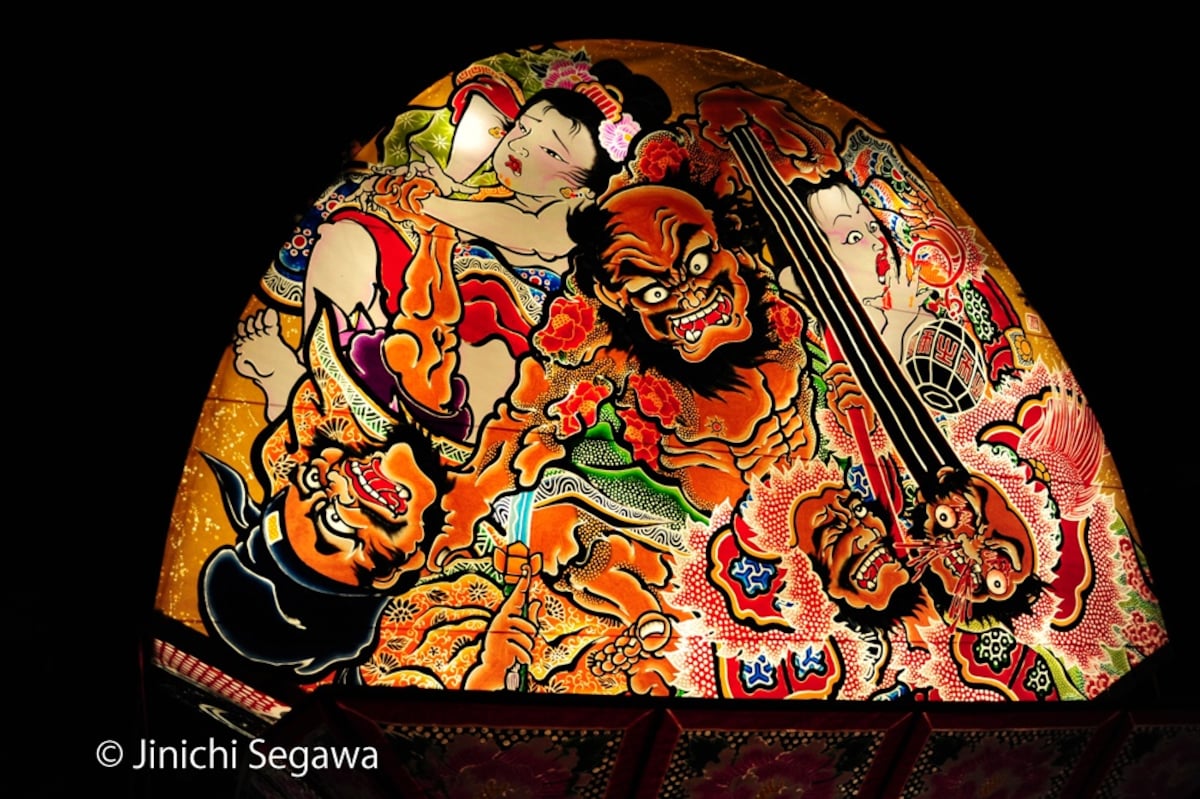
Here, too, one of the men on the far right looks like his eyes are about to pop, conveying a sense of the brutality of historical battles.
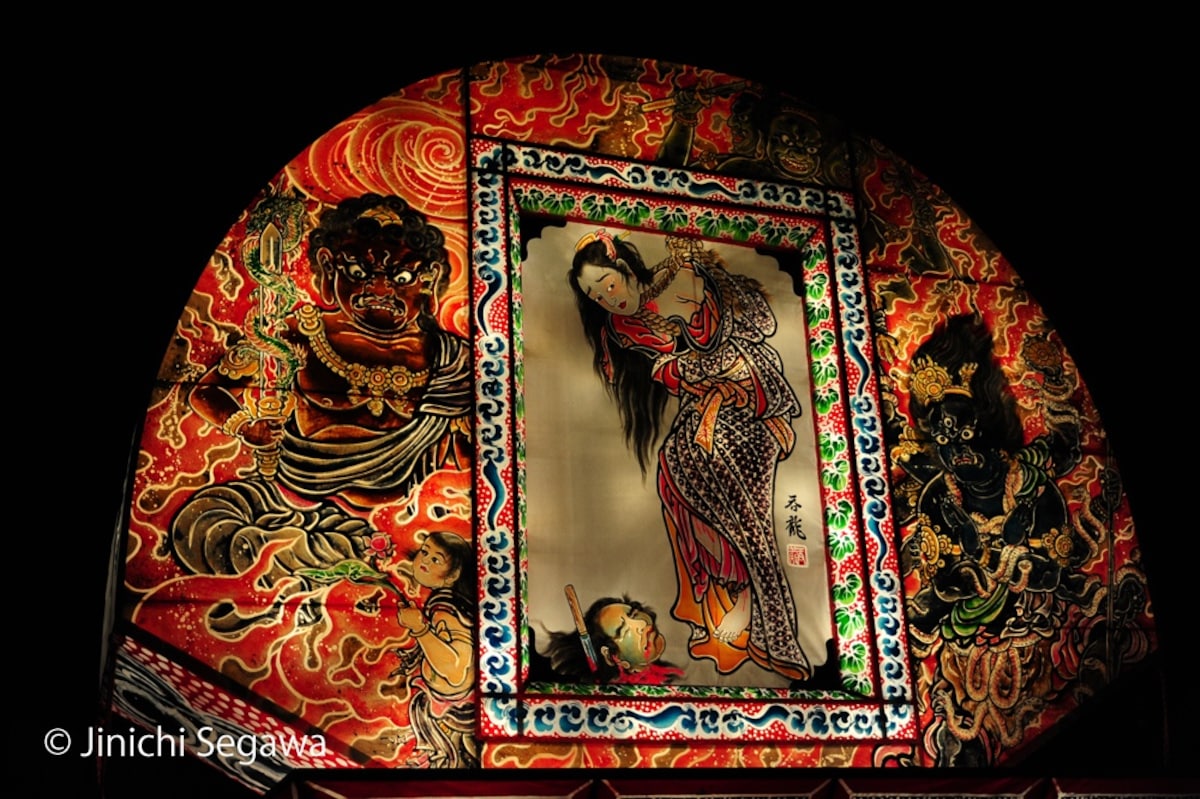
The miokuri-e on the backs of the floats aren't necessarily any nicer. The image on the back of this float features a decapitated head at the feet of a woman dangling in the air, bringing lurid life to a brutal scene not unknown to Japan's Warring States Period (1467-1590).
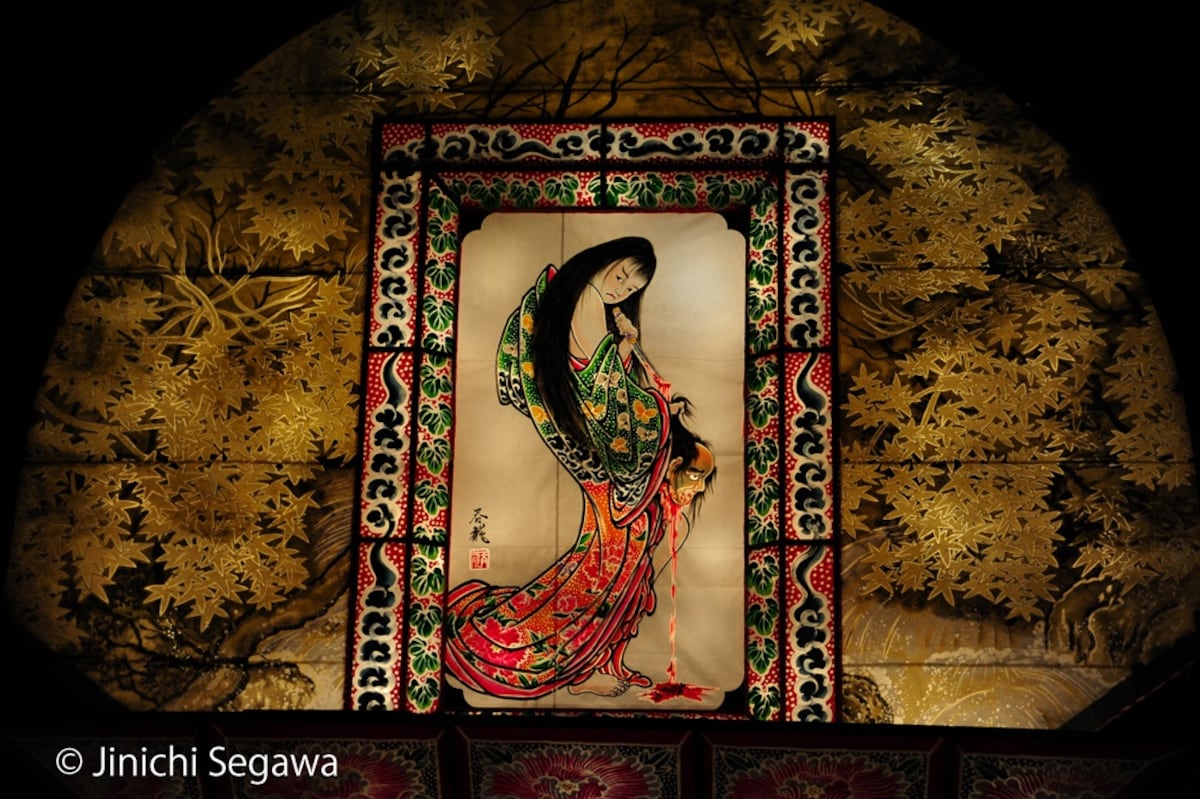
In this miokuri-e, a woman brandishes a knife over a head she seems to have just cut off, her menacing look captured perfectly in art.
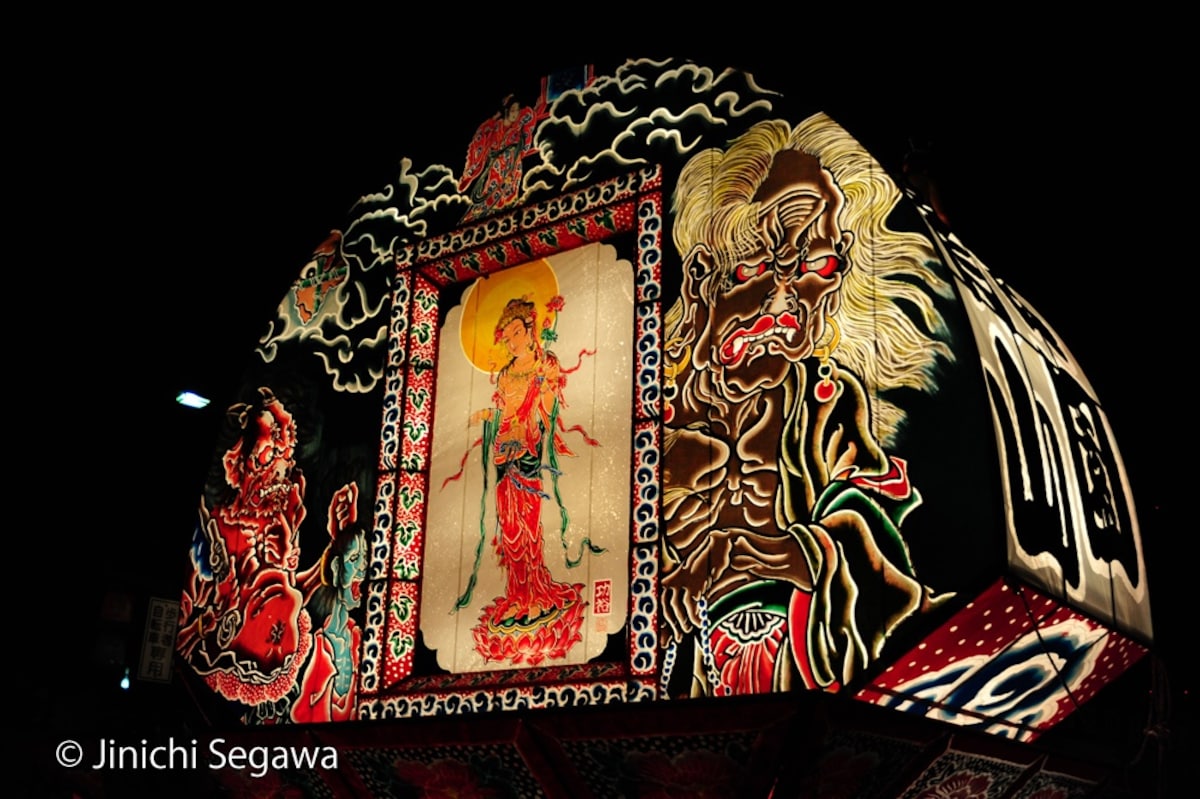
Here we have the goddess of mercy, Kannon, radiating from the center of the float, but she's flanked by a terrifying old woman and a demon from hell.
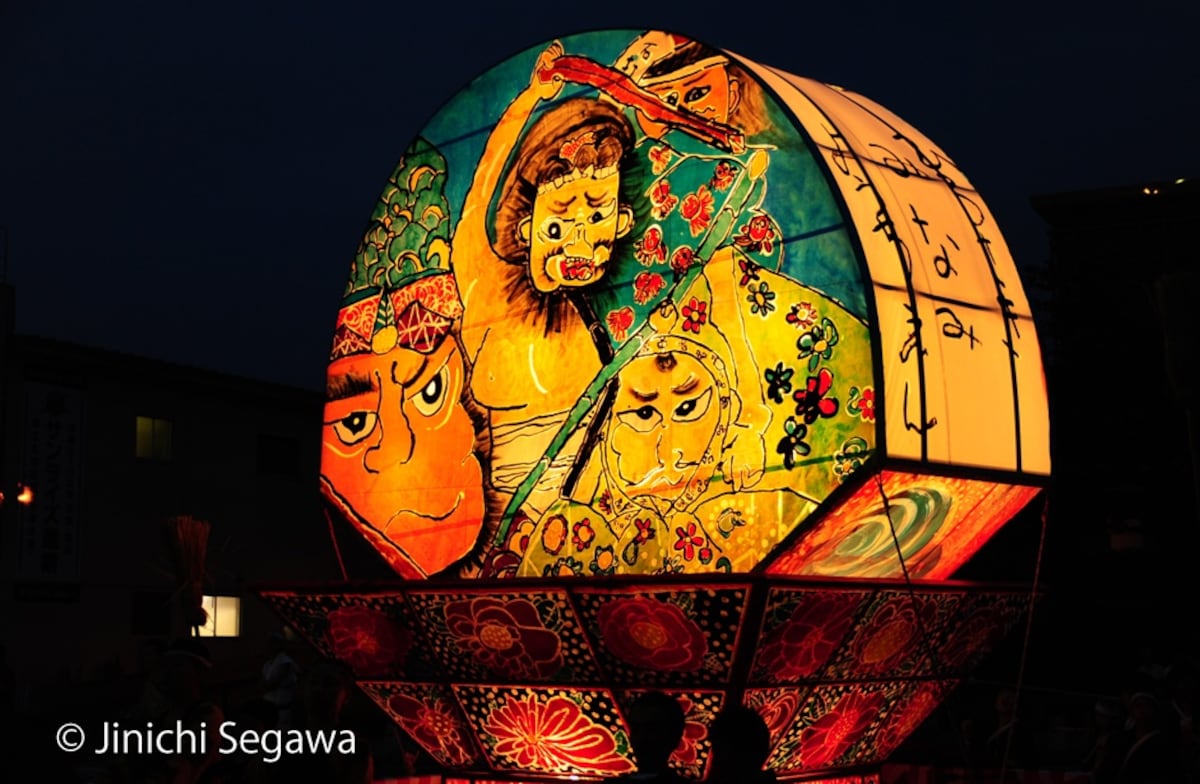
Not all of the floats feature images that will give you nightmares, however. As a palate-cleanser, have a look at this float, which was illustrated by children from a local kindergarten (though it's still a little unsettling).
The Hirosaki Neputa Festival runs from August 1 to 7 each year. Head on up to Aomori to get a glimpse of these gut-churning images—but book early, because hotels in the area fill up fast!


